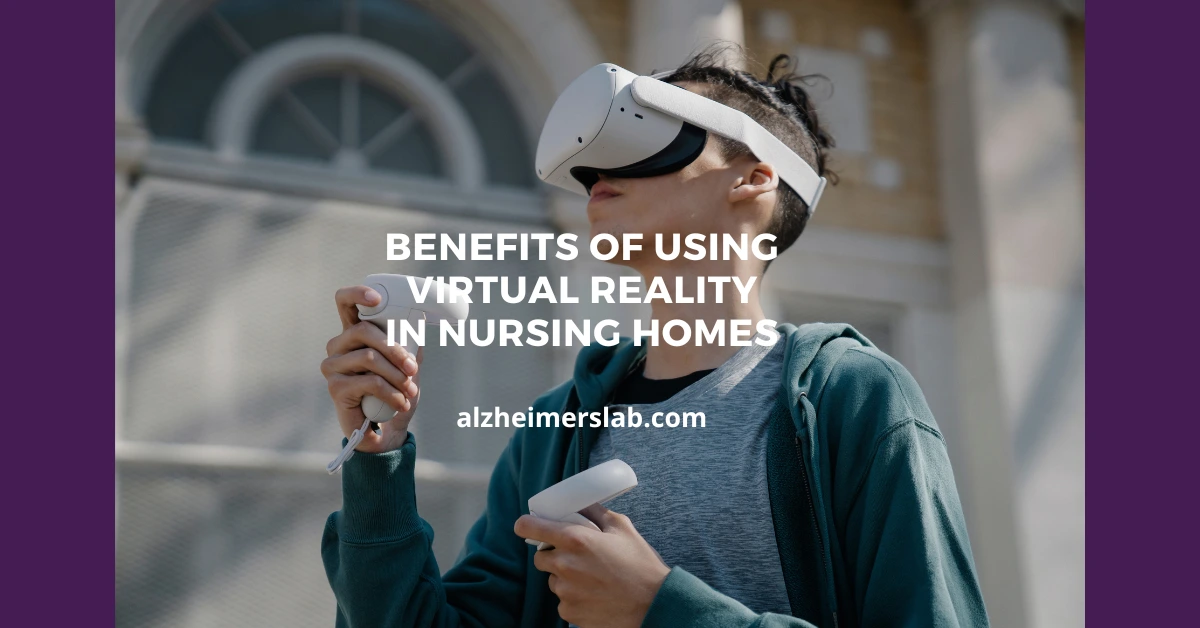Benefits of Using Virtual Reality in Nursing Homes
As we age, we are more likely to experience physical and cognitive decline, leading to a decreased quality of life. This can be particularly difficult for those who reside in nursing homes, where they may feel isolated and lonely.
However, with the advent of virtual reality (VR), we are seeing a new way to enhance the lives of elderly individuals living in these homes. In this blog post, I will talk about the benefits of using virtual reality in nursing homes and how it can improve the lives of elderly residents.
Introduction to virtual reality
Virtual reality is a simulated experience that can be similar to or completely different from the real world. It is achieved through the use of VR headsets, which immerse the user in a 360-degree digital environment. Virtual reality has been used in many industries, from gaming to education, and healthcare is no exception.
Benefits of using VR in nursing homes
1. Improved cognitive function
Studies have shown that using VR can improve cognitive function in older adults. By engaging in VR experiences, nursing home residents can stimulate their brains and improve memory, attention, and problem-solving skills. This is particularly beneficial for those with cognitive impairments such as Alzheimer’s disease.
2. Reduced social isolation
One of the biggest challenges facing nursing home residents is social isolation. By using VR, residents can connect with others and participate in activities that they may not have been able to do before. For example, they can attend virtual concerts, go on virtual tours of museums, and even interact with people from around the world.
3. Enhanced mood and wellbeing

Research has shown that VR experiences can enhance mood and well-being in older adults. This is because they allow residents to escape their daily routine and experience new things. This can be particularly beneficial for those with depression or anxiety.
4. Pain management
Pain management is a significant concern for many nursing home residents, and VR can be used as a non-pharmacological pain management tool. By immersing themselves in a relaxing virtual environment, residents can experience a reduction in pain and discomfort.
Examples of virtual reality in nursing homes
1. Reminiscence therapy
Reminiscence therapy involves discussing past events and experiences as a way of improving mood and cognitive function. VR can be used to create virtual environments that resemble a resident’s past experiences, such as their childhood home or a favorite vacation spot. By immersing themselves in these environments, residents can trigger memories and improve cognitive function.
2. Virtual field trips
Virtual field trips are a great way to engage nursing home residents and allow them to experience new things. For example, residents can take virtual tours of famous landmarks, such as the Eiffel Tower or the Grand Canyon. This can be particularly beneficial for residents who may not have been able to travel in their younger years.
3. Relaxation and meditation
Many nursing home residents struggle with anxiety and stress, and VR can be used to help them relax and meditate. By immersing themselves in calming virtual environments, such as a beach or a forest, residents can experience a reduction in anxiety and stress levels.
Challenges and limitations of using VR in nursing homes
1. Cost
One of the biggest challenges facing the implementation of VR in nursing homes is the cost. VR headsets and software can be expensive, and nursing homes may not have the funds to invest in these technologies.
2. Technological barriers
Another challenge facing the implementation of VR in nursing homes is technological barriers. Many nursing home residents may not be familiar with technology, and training staff to use VR technology can be time-consuming and costly.
3. Health concerns
Finally, there are health concerns to consider when using VR in nursing homes. For example, some residents may experience motion sickness or dizziness when using VR headsets. It is important to monitor residents for any adverse effects and ensure that the VR experiences are appropriate for their individual needs and health conditions.
Future of VR in nursing homes
Despite the challenges and limitations, the future of VR in nursing homes looks bright. As the technology becomes more advanced and affordable, we can expect to see more nursing homes implementing VR as a way to enhance the lives of their residents. Additionally, as VR technology becomes more user-friendly, it may become easier for nursing home staff to use and train residents to use it independently.
How do nursing home staff ensure that VR experiences are appropriate for each resident’s individual needs and health conditions?
To ensure that VR experiences are appropriate for each resident’s needs, nursing home staff members first need to understand each resident’s unique medical history and current health status. This involves conducting a thorough medical evaluation and consulting with the resident’s primary care physician and other healthcare providers to determine whether VR experiences are safe and appropriate.
Staff members also need to consider the resident’s cognitive and sensory abilities when selecting VR experiences. For residents with dementia or other cognitive impairments, VR experiences may need to be tailored to their level of cognitive functioning and provide a more simplistic and easy-to-understand interface.
Additionally, staff members need to take into account the resident’s physical limitations and mobility issues. VR experiences may need to be adapted to accommodate residents who are wheelchair-bound or have limited mobility. For example, VR experiences can be modified to include seated activities or lower-intensity movements.
Once nursing home staff members have assessed each resident’s individual needs and health conditions, they can select appropriate VR experiences that align with their interests and abilities.
For instance, a resident with a history of aviation interest may enjoy a VR experience that simulates flying an airplane. Similarly, a resident who enjoys the outdoors may benefit from a VR experience that allows them to explore a natural environment.
Nursing home staff members need to monitor residents during VR experiences to ensure they are comfortable and safe. Staff members should be trained to recognize signs of discomfort, such as dizziness, nausea, or disorientation, and should be able to intervene if necessary.
Additionally, staff members should be available to assist residents with any technical difficulties or concerns that arise during the VR experience.
What measures can be taken to ensure that residents who are unfamiliar with technology can still benefit from VR experiences?
The first measure is to provide residents with a detailed orientation to VR technology. This orientation can include an explanation of how VR works, what the resident can expect during a VR experience, and any necessary instructions for operating the equipment. Staff members can also demonstrate how to use the equipment and offer residents the opportunity to practice before participating in a VR experience.
Another measure is to provide ongoing support during VR experiences. Staff members can be available to assist residents with any technical difficulties that may arise and offer encouragement and guidance throughout the experience. This support can help residents feel more comfortable and confident while using VR technology.
Adapting VR experiences to meet the needs of individual residents can also be an effective measure. For example, VR experiences can be modified to include simpler interfaces, larger text, and icons, or audio instructions to make them more accessible to residents who may have difficulty with visual or motor tasks.
In addition, nursing home staff members can also provide residents with social support during VR experiences. Staff members can participate in VR experiences with residents, encouraging them and helping them to navigate the experience. This social support can help residents feel more comfortable and engaged during the experience.
Finally, providing opportunities for residents to interact with VR technology in a low-pressure setting can also be helpful. Staff members can offer residents the opportunity to explore VR technology in a non-clinical environment, such as during a social event or activity. This can help residents become more familiar with the technology and feel more comfortable participating in VR experiences in the future.
How can nursing homes ensure that VR technology is accessible to all residents, including those with limited mobility or sensory impairments?
Firstly, nursing homes can invest in VR equipment that is designed to be accessible to residents with mobility or sensory impairments. For example, there are VR headsets with larger lenses that can accommodate glasses or those with visual impairments.
Some hand-held controllers can be customized to fit individual residents’ hand sizes and abilities. Additionally, nursing homes can invest in VR equipment that is designed for wheelchair accessibility, allowing residents with limited mobility to participate in VR experiences.
Secondly, nursing homes can provide personalized training and support for residents who may need assistance using VR technology. For example, residents with limited mobility may require assistance in navigating VR experiences or adjusting equipment.
Residents with visual or hearing impairments may require additional support to fully engage in VR experiences. Nursing home staff can receive specialized training to provide this support and ensure that all residents have access to VR technology.
Thirdly, nursing homes can collaborate with outside organizations or specialists to provide customized VR experiences for residents with specific needs or interests. For example, residents with dementia may benefit from VR experiences that simulate familiar environments or activities from their past.
Residents with mobility impairments may benefit from VR experiences that simulate outdoor activities such as hiking or gardening. By working with outside organizations or specialists, nursing homes can ensure that all residents have access to customized and engaging VR experiences.
Conclusion
The benefits of using VR in nursing homes are clear. From improving cognitive function to reducing social isolation, VR has the potential to enhance the lives of elderly residents. However, there are also challenges and limitations to consider, such as cost and technological barriers. Despite these challenges, the future of VR in nursing homes looks promising.
I would love to hear your thoughts on the use of VR in nursing homes. Have you or a loved one experienced VR in a nursing home setting? Do you have any concerns or reservations about its use? Let me know in the comments below!

